Why Scooter Safety Matters
Scooter safety is key to ensuring everyone in the family can enjoy riding with confidence and peace of mind. While scooters are a fun and convenient way to get around, accidents can happen, especially if safety precautions are overlooked. Wearing the right protective gear, like helmets, knee pads, and elbow pads, can prevent injuries in case of a fall. It’s also important to teach kids safe riding habits, such as following traffic rules, staying alert, and riding in safe environments. By prioritizing safety and maintenance, families can minimize risks and make scooter rides enjoyable for all ages.
General Safety Tips for Family Scooting
From wearing the right gear to choosing safe paths, we’ve got you covered with these essential safety tips for all ages and experience levels.
Always Wear a Helmet
This is non-negotiable. Helmets are the most important safety gear for any rider. A properly fitted helmet can reduce the risk of head injury by up to 85%. Make sure helmets meet local safety standards (like CPSC in the U.S. or CE in Europe) and fit snugly without wobbling.
Stick to Safe Riding Areas
Avoid heavy traffic and stick to sidewalks, parks, bike lanes, or designated scooter paths. Teach kids basic road safety to look both ways before crossing streets and to always yield to pedestrians.
Teach Safe Riding Techniques
ScootInstruct riders on proper braking, turning, and stopping methods, and emphasize the importance of staying alert to their surroundings .
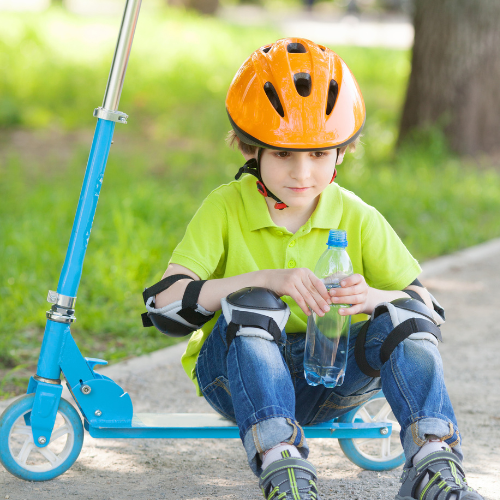
Do A Pre-Ride Check
Before heading out, inspect the scooters for loose bolts, worn wheels, or damaged brakes. A quick once-over can prevent mechanical failures during a ride. Make this part of your family’s routine—it’s also a great way to teach kids responsibility for their gear.
Stay visible
Wear bright or reflective clothing, especially in low-light conditions. Add reflectors or lights to your scooter for extra visibility.
Age-Specific Tips
Scootering is fun for all ages, but safety needs change as kids grow. From toddlers to teens and adults, each age group requires different safety precautions.
Pre-Schoolers
(ages 3-5)
Use age-appropriate ride-on or three-wheeled scooters with wide, stable bases.
Always ride with close adult supervision.
Limit riding to smooth, flat surfaces like indoor areas, patios, or driveways.
Focus on balance and coordination through short, fun sessions.
Make helmets a habit early—even for short rides.
Teach simple instructions like “stop,” “slow,” and “turn.”
Kids
(Ages 6-9)
Start with three-wheeled scooters for better stability as they learn balance.
Use brightly colored helmets and safety gear to encourage use.
Keep rides short and within supervised areas like cul-de-sacs, driveways, or park
Practice starting, stopping, and turning in controlled environments.
Teach kids to look both ways and stop at driveways or sidewalk edges.
No scootering near roads, steep hills, or in wet/slippery conditions.
Use scooters that are the correct height—handlebars should be at waist level.
Tweens
(Ages 10-12)
Introduce hand signals and basic road awareness (like stop signs and crosswalks).
Practice stopping quickly and controlling speed—especially on gentle slopes.
Upgrade to a two-wheeled scooter designed for their age and size.
Teach awareness of pedestrians, other riders, and obstacles.
Allow more independence, but set clear boundaries (e.g., how far they can ride, approved routes).
Make sure they wear reflective gear or use lights if riding near dusk.
Discourage the use of phones, earbuds, or anything that distracts them while riding.
Teens
(Ages 13+)
Model safe scooter habits—always wear a helmet and use hand signals.
Follow traffic laws when riding on roads or bike lanes.
Choose the right scooter for your weight and skill level—commuter or stunt scooters.
Inspect scooters regularly: check wheels, brakes, and handlebars.
Be extra cautious in high-traffic areas and ride predictably to avoid collisions.
Respect pedestrians—slow down on shared paths and give verbal warnings when passing.
Avoid riding in wet or low-light conditions unless the scooter has lights and reflectors.
Encourage group rides with clear safety expectations, especially with teens.
Use scooters for fun or transport—but always with safety as the top priority.
Must-Have Safety Gear
Whether your child is just starting out or you’re a teen or adult commuter, these gear essentials should always be part of your ride.
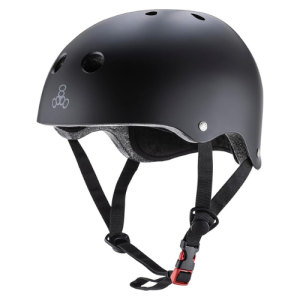
Helmet
Look for:
Adjustable fit system
Ventilation for comfort
Safety certifications (CPSC, ASTM, or EN 1078)
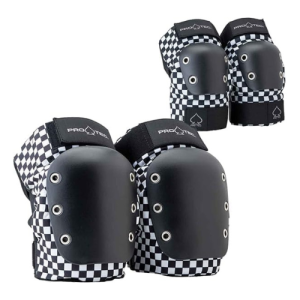
Knee and Elbow Pads
These are essential for younger or less experienced riders. Choose sets with adjustable straps and comfortable padding that won’t restrict movement.
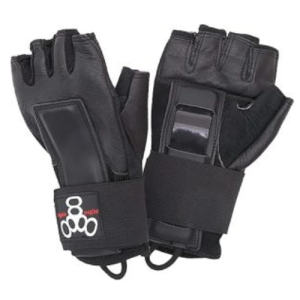
Wrist Guards
Often overlooked, wrist guards protect against one of the most common scooter injuries—falling forward and landing on outstretched hands.
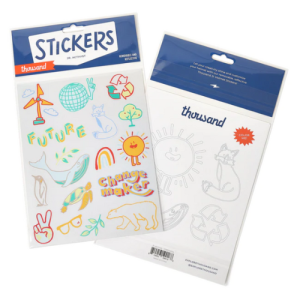
Reflective Clothing and Stickers
Add reflective stickers to scooters and helmets, and consider vests or armbands for early morning or late afternoon rides.
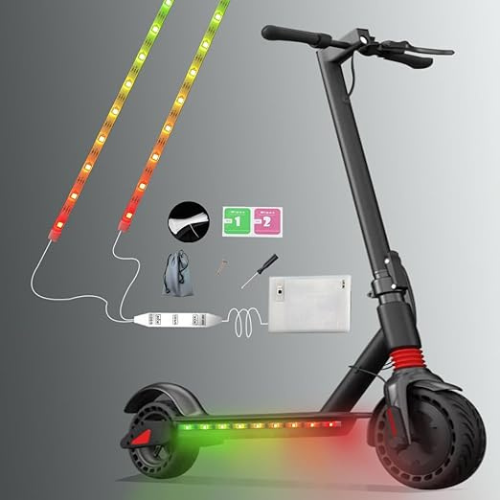
Scooter Lights
Strip LED lights improve visibility to others. Many adult scooters have built-in lights, but for kids, clip-on or strap-on lights are easy to install.
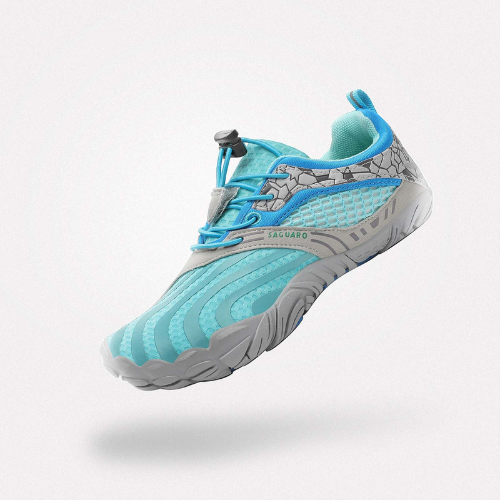
Proper Footwear
Always wear closed-toe shoes with good grip—no sandals, flip-flops, or bare feet! Barefoot shoes for example are minimalistic and flexible .
Maintenance = Safety
A well-maintained scooter is a safer scooter. Doing a quick tune-up every month can extend the life of your scooters and prevent avoidable accidents. Here’s a simple maintenance checklist:
Teaching Scooter Safety to Kids
It’s not just about gear—it’s about awareness and habits. Here are some ways to teach safety while keeping it fun.
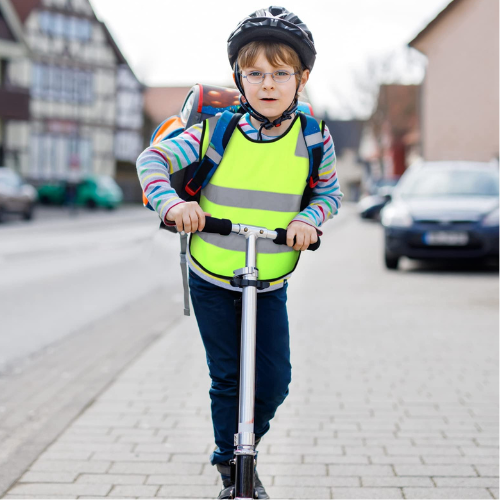
Set Rules Together
Kids are more likely to follow rules they help create. Set clear riding boundaries, curfews, and safety expectations as a family.
Practice Safe Falling
Teach kids to let go of the handlebars and roll when falling to avoid wrist injuries.
Reward Good Behavioiurs
Use praise or small rewards to reinforce helmet-wearing and safe behavior.
Lead By Example
When parents wear helmets and follow rules, kids are much more likely to do the same.
Family Scooter Safety Checklist
Here’s a handy summary to run through before every ride. Print it out and hang it near your garage or entryway:
Final Thoughts
Scootering as a family is a wonderful way to bond, stay active, and enjoy the outdoors—but safety must always come first. With the right habits, protective gear, and a little planning, your family can confidently explore the world on two (or three!) wheels. Invest in safety now, and you’ll enjoy many miles of smooth, fun, and worry-free rides.
Happy scooting!
